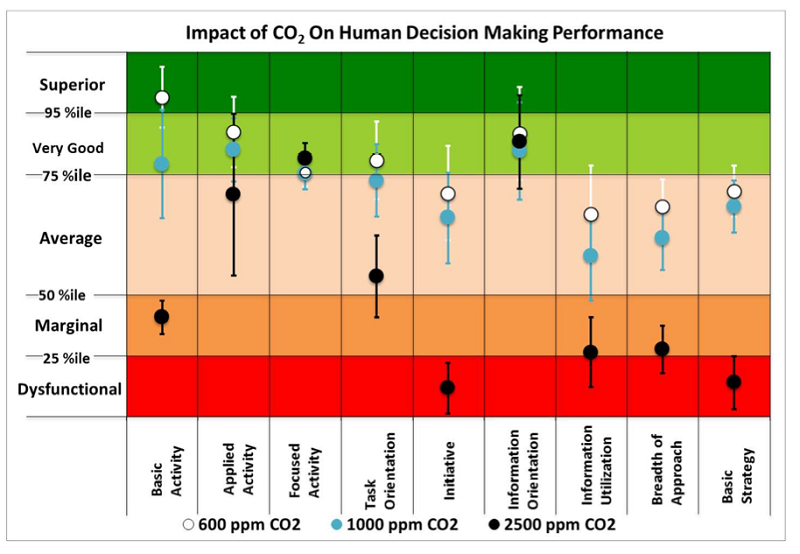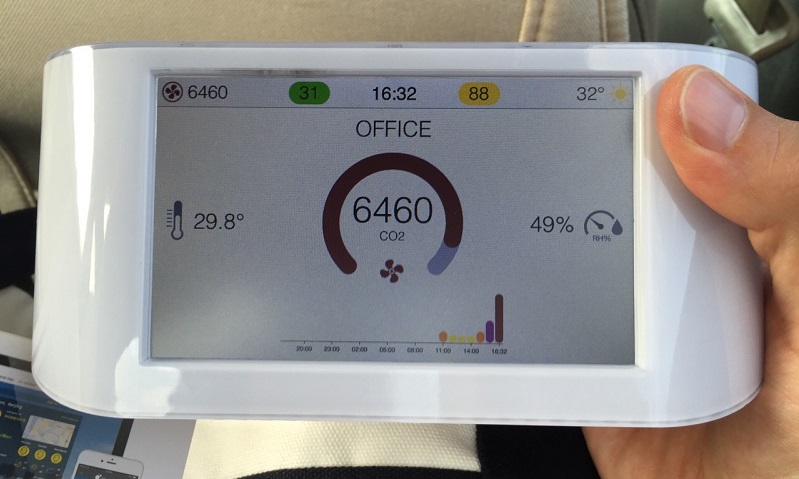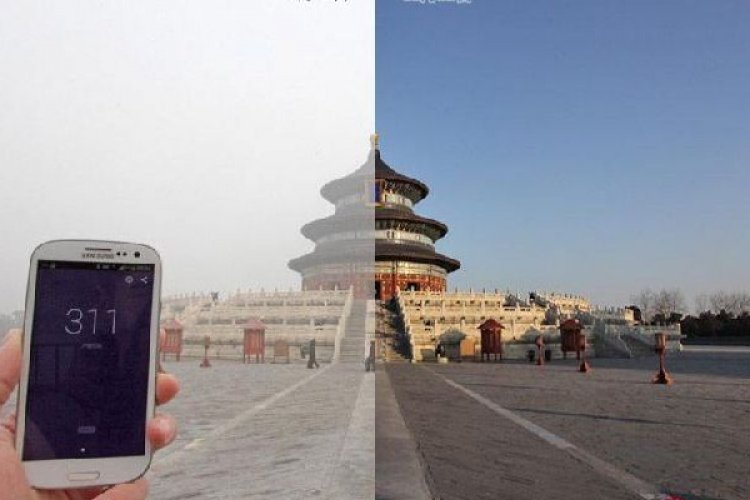Prepare Yourself for the Beijing Smog Monster's Return with a Combo PM2.5 and CO2 Monitor
While we must keep in mind that the glass is still half full (2016 has been a better year for air in Beijing than 2015), the harsh reality is that we're headed into a stretch of forecasted smoggy days that reminds us that we should all continue to be vigilant about air quality.
As a certified Beijing air obsessive (equipped with five air filtration devices in my home, one in every room of my office, and a drawer full of masks), I was noticeably excited when Airvisual came up with the Node, a new, potentially game-changing home use air monitor.
I was quick to throw my support behind their crowdfunding campaign, and after a series of manufacturing hiccups, the device was finally released in late summer.
The Node has all the features of the awesome Laser Egg and then some: On top of an in-room air quality monitor, it also boasts a CO2 monitor, Wi-Fi access to report current outdoor air conditions, and a display of weather and air quality forecasting.
Why a CO2 monitor? Because if you're like me, you close your windows tight when the air is bad (read: most of the time), and the CO2 from your exhalations can build up rather quickly. While CO2 is not toxic nor cancer-causing, it can result in drowsiness, sluggishness, and even poor decision-making.

I’ve spent the last month exhaustively using the Node and it has already impacted my Beijing life due to the inclusion of the CO2 monitor.
As someone who guards themselves against the foul air of Beijing, my life consists primarily of shuttling from one air-tight space to another: The closed confines of my office, where we are hermetically sealed against the gray smog and have our filters on high; the impenetrable fortress of my home, where the doors and windows are kept closed and our four different models of air filters run almost all the time; a taxi cab or subway car in between.
While vague concepts of “airing out” indoor spaces were in the back of my mind, I always figured I would be better off guarding against pollution than fretting about stale air.
What I discovered in a month of testing the Node was that most of the spaces I inhabit take only about four hours to fill with questionably high levels of CO2.
This has caused me to rethink the concept of keeping my windows closed all the time, even on airpocalyptic days. Now, no matter how bad the air, I open the windows twice a day to clear the room of excess CO2 before re-sealing my bubble and turning on my machines. It's not as tragic as it would seem; with my filters on high it usually takes less than 30 minutes to get the indoor air back to the green zone.
I also took the Node inside an Uber driver’s air-conditioned vehicle to see what the CO2 level would be like while stuck in traffic on a hot day along the Fourth Ring Road. I'll let the picture that speaks a proverbial thousand words inform you about CO2 levels in closed cars:

The Node has other features that make it a winner, like an attractive, informative display and a neat design that stands squarely on a flat surface (for some reason I live in fear of my Laser Egg rolling off a table, though it never has). There's also an air forecasting device and a side-by-side comparison of your indoor air with whatever city outdoor air monitoring station you'd like to set it to.
There are some kinks of course. The interface for set up is a bit clumsy and time consuming (due to the fact that the device does not have a touchscreen nor a keypad), hence entering a Wi-Fi password becomes a chore. Its screen could do with an automatic dimmer.
I also found it inconvenient that the device is not location-aware. I shuttle mine from room to room in my house and my office, but on setup I am forced to choose a name for one location (hence, wherever I place the device, it says "OFFICE").
Also, since I live and work in different areas, the device only shows me the readings of the one location I choose to set it to at the beginning, rather than choosing the nearest measuring station automatically (as its companion iPhone app does).
There's lots more in there to explore, but to be honest, those functions are just the icing on the cake that I don't really need at this point. It's the CO2 monitor that's the real "killer app" that has brought the indoor air monitoring to the next level.
The Airvisual can be found at April Gourmet, via WeChat here and via PayPal here. The device, normally priced at RMB 1,188, but is on offer for RMB 988 via the company's WeChat.
Images: Airvisual, Michael Wester, Lawrence Berkeley National Laboratory







